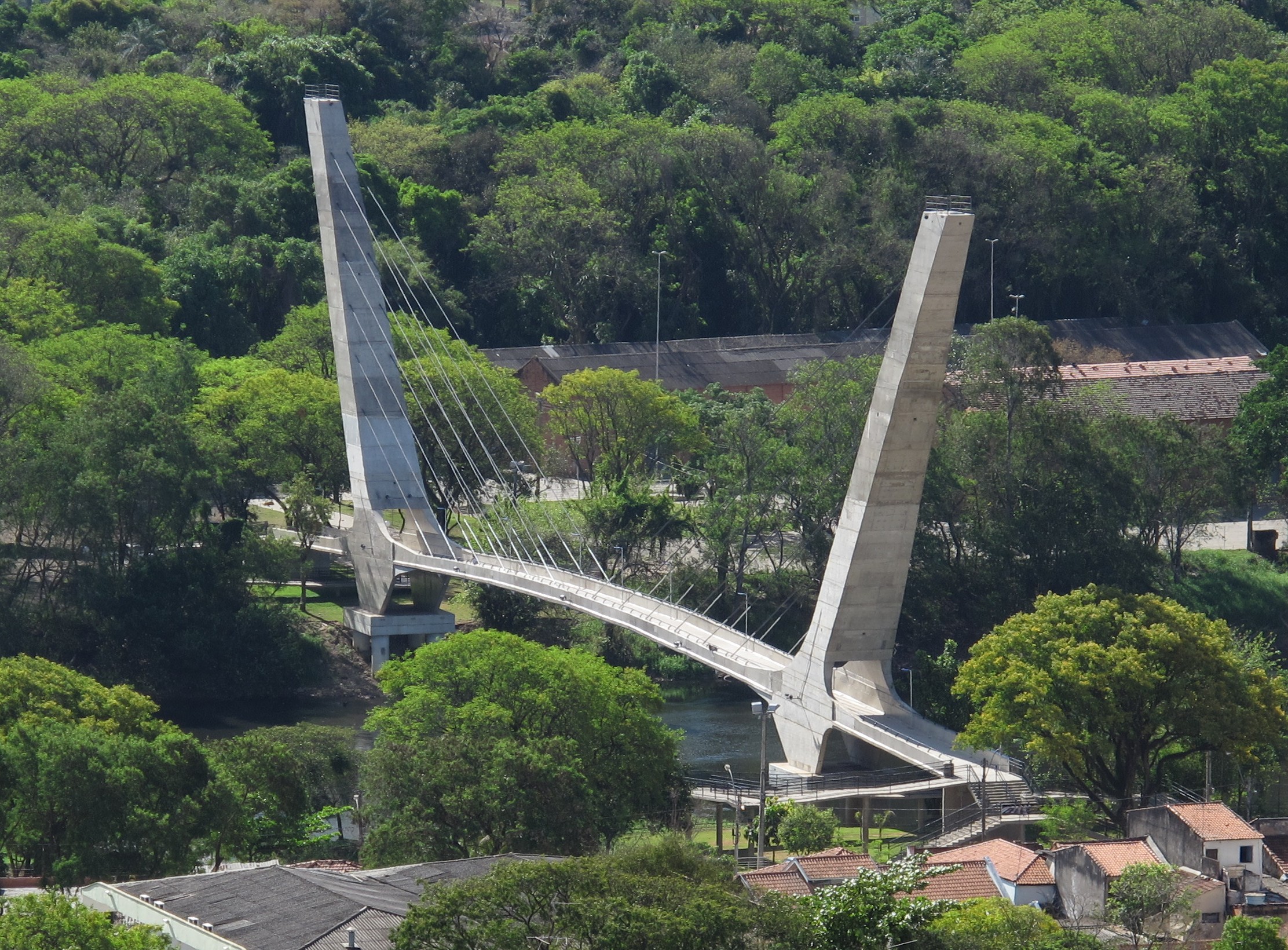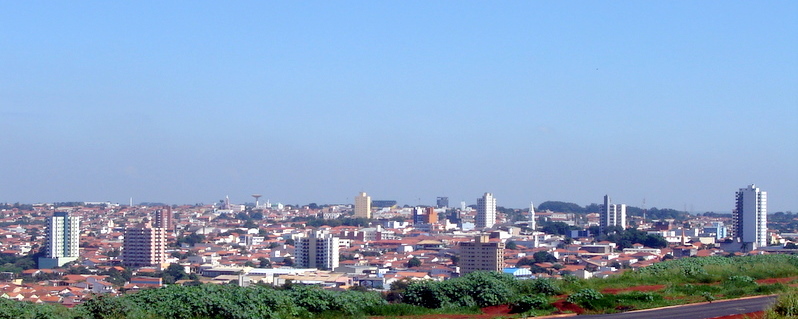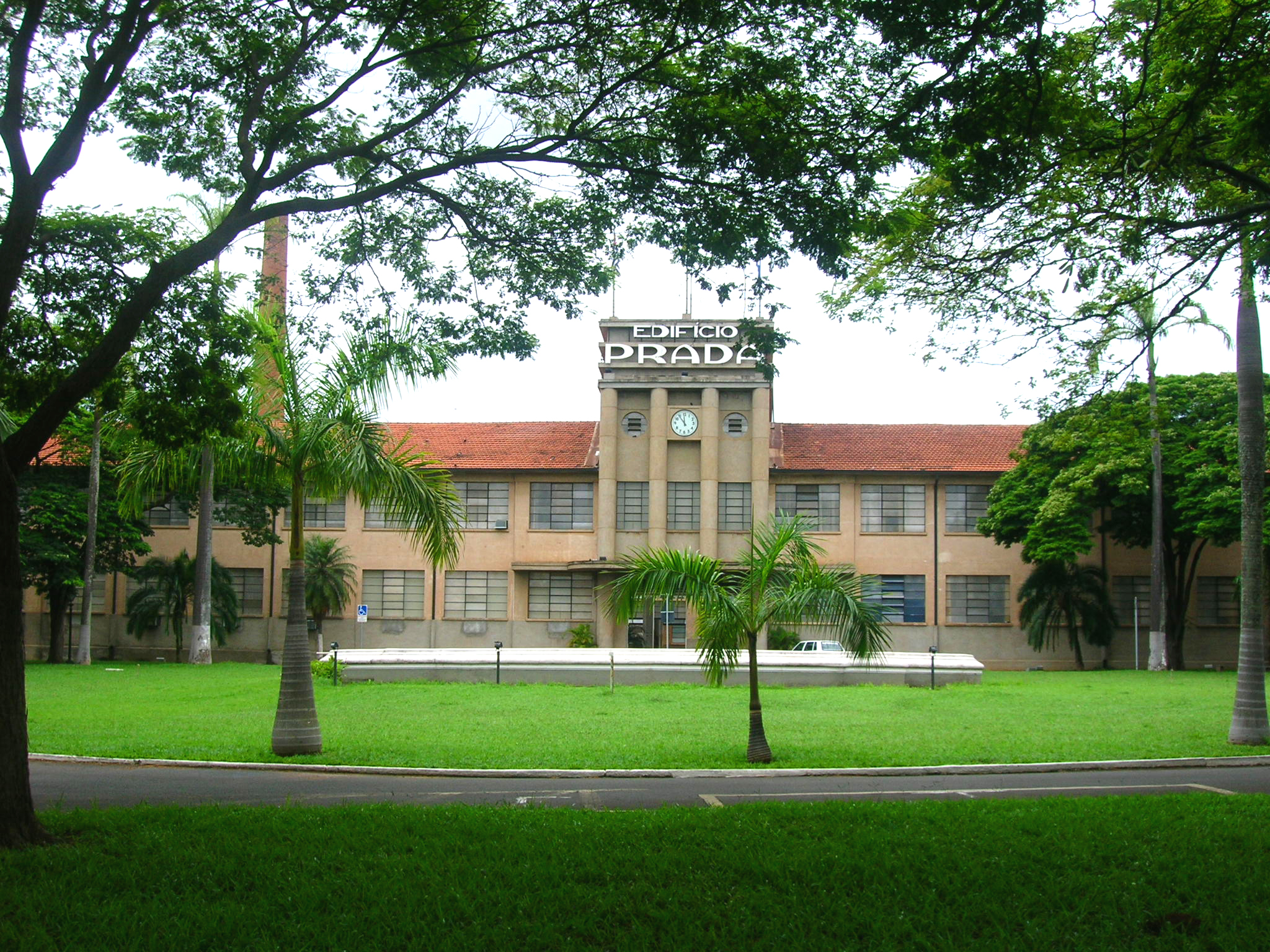|
Piracicaba River
The Piracicaba River is a river of São Paulo state in southeastern Brazil. It is a tributary of the Tietê River, which it joins in the reservoir created by Barra Bonita Dam. There is also another Piracicaba river in the state of Minas Gerais, named after the one from São Paulo state, since the early colonizers of Minas Gerais largely came from São Paulo. Geography The basin of the Piracicaba River extends over an area of 12,531 km², located in the southeast of the state of São Paulo and extreme south of Minas Gerais. The Piracicaba river is born from the junction of the Atibaia and Jaguari rivers, in the municipality of Americana. After crossing the city of Piracicaba, it receives the waters of its main tributary, Corumbataí river. The Piracicaba River runs 115 km from its source to its mouth on the Tietê River between the municipalities of Santa Maria da Serra and Barra Bonita. Piracicaba has several meanders that make the waters of its bed suitable for th ... [...More Info...] [...Related Items...] OR: [Wikipedia] [Google] [Baidu] |
Piracicaba
Piracicaba ( or ) is a city located in the Brazilian state of São Paulo. The population is 407,252 (2020) in an area of 1378.07 km². It is at an elevation of 547 m above sea level. Name The place name comes from a word in the Tupi language that means "place where the fish stops", and it is formed by the junction of the terms ''pirá'' ("fish"), ''syk'' ("stop") e ''aba'' ("place").. The name refers to the waterfalls of the Piracicaba River, which bisects the city, which is a point where the "piracema"—fish swimming upstream to reproduce— are stopped. History In 1766, Antonio Correa Barbosa, charged with the task of establishing a settlement on the estuary of Piracicaba river, opted for a location about from it. The settlement was officially founded on August 1, 1767, as a ''povoação'' subordinated to the ''vila of'' Itu. In 1784, Piracicaba gets emancipated from Itu, becoming a ''freguesia.'' In 1821, the freguesia is promoted to ''vila'', known as Vila Nova d ... [...More Info...] [...Related Items...] OR: [Wikipedia] [Google] [Baidu] |
Campinas
Campinas (, ''Plains'' or ''Meadows'') is a Brazilian municipality in São Paulo State, part of the country's Southeast Region. According to the 2020 estimate, the city's population is 1,213,792, making it the fourteenth most populous Brazilian city and the third most populous municipality in São Paulo state. The city's metropolitan area, Metropolitan Region of Campinas, contains twenty municipalities with a total population of 3,656,363 people. Etymology Campinas means ''grass fields'' in Portuguese and refers to its characteristic landscape, which originally comprised large stretches of dense subtropical forests (mato grosso or thick woods in Portuguese), mainly along the many rivers, interspersed with gently rolling hills covered by low-lying vegetation. Campinas' official crest and flag has a picture of the mythical bird, the phoenix, because it was practically reborn after a devastating epidemic of yellow fever in the 1800s, which killed more than 25% of the city's inhabi ... [...More Info...] [...Related Items...] OR: [Wikipedia] [Google] [Baidu] |
Google Maps
Google Maps is a web mapping platform and consumer application offered by Google. It offers satellite imagery, aerial photography, street maps, 360° interactive panoramic views of streets ( Street View), real-time traffic conditions, and route planning for traveling by foot, car, bike, air (in beta) and public transportation. , Google Maps was being used by over 1 billion people every month around the world. Google Maps began as a C++ desktop program developed by brothers Lars and Jens Rasmussen at Where 2 Technologies. In October 2004, the company was acquired by Google, which converted it into a web application. After additional acquisitions of a geospatial data visualization company and a real-time traffic analyzer, Google Maps was launched in February 2005. The service's front end utilizes JavaScript, XML, and Ajax. Google Maps offers an API that allows maps to be embedded on third-party websites, and offers a locator for businesses and other organizations in numero ... [...More Info...] [...Related Items...] OR: [Wikipedia] [Google] [Baidu] |
GEOnet Names Server
The GEOnet Names Server (GNS), sometimes also referred to in official documentation as Geographic Names Data or geonames in domain and email addresses, is a service that provides access to the United States National Geospatial-Intelligence Agency's (NGA) and the US Board on Geographic Names's (BGN) database of geographic feature names and locations for locations outside the US. The database is the official repository for the US Federal Government on foreign place-name decisions approved by the BGN. Approximately 20,000 of the database's features are updated monthly. Names are not deleted from the database, "except in cases of obvious duplication". The database contains search aids such as spelling variations and non-Roman script spellings in addition to its primary information about location, administrative division, and quality. The accuracy of the database had been criticised. Accuracy A 2008 survey of South Korea toponyms on GNS found that roughly 1% of them were actually Japan ... [...More Info...] [...Related Items...] OR: [Wikipedia] [Google] [Baidu] |
Tributaries Of The Río De La Plata
A tributary, or affluent, is a stream or river that flows into a larger stream or main stem (or parent) river or a lake. A tributary does not flow directly into a sea or ocean. Tributaries and the main stem river drain the surrounding drainage basin of its surface water and groundwater, leading the water out into an ocean. The Irtysh is a chief tributary of the Ob river and is also the longest tributary river in the world with a length of . The Madeira River is the largest tributary river by volume in the world with an average discharge of . A confluence, where two or more bodies of water meet, usually refers to the joining of tributaries. The opposite to a tributary is a distributary, a river or stream that branches off from and flows away from the main stream. PhysicalGeography.net, Michael Pidwirny & ... [...More Info...] [...Related Items...] OR: [Wikipedia] [Google] [Baidu] |
List Of Rivers Of São Paulo
List of rivers in São Paulo (Brazilian State). The list is arranged by drainage basin from north to south, with respective tributaries indented under each larger stream's name and ordered from downstream to upstream. All rivers in São Paulo drain to the Atlantic Ocean. By Drainage Basin Atlantic Coast * Paraíba do Sul ** Barra Mansa River ** Bananal River ** Barreiro de Baixo River ** Sesmarias River ** Do Salto River ** Itagacaba River ** Bocaina River ** Guaratinguetá River ** Buquira River ** Jaguari River *** Parateí River (Lambari-Parateí River) *** Do Peixe River *** Pilões River ** Itapeti River ** Paraibuna River *** Lourenço Velho River *** Do Peixe River *** Ipiranga River ** Paraitinga River *** Itaim River *** Jacuí River ** Comprido River * Bracuí River * Mambucaba River * Puruba River * Camburu River * Itapanhaú River * Cubatão River * Branco River * Comprido River * Guaraú River * Una do Prelado River * Ribeira de Iguape R ... [...More Info...] [...Related Items...] OR: [Wikipedia] [Google] [Baidu] |
Santa Bárbara D'Oeste
Santa Bárbara d'Oeste is a Municipalities of Brazil, municipality in the São Paulo (state), State of São Paulo in Brazil. It is part of the Metropolitan Region of Campinas. It lies about northwest of the State capital. It occupies an area of , of which is urban. In 2020, the population was estimated at 194,390 by the Brazilian Institute of Geography and Statistics, making it the 43rd most populous city in São Paulo and the sixth largest in the metropolitan region of Campinas. Santa Bárbara d'Oeste has an annual average temperature of , and the original vegetation of the area predominates. The city has an urbanization rate of 98.73%. As of 2009, there were 44 medical institutions in the city, and its human development index (HDI) is rated as 0.819 in relation to the rest of the state. Founded on 4 December 1818, when the Church was built, the city was named in honor of its patron saint, Santa Barbara, it was originally part of Piracicaba. It separated from Piracicaba in 1900 ... [...More Info...] [...Related Items...] OR: [Wikipedia] [Google] [Baidu] |
Rio Claro, São Paulo
Rio Claro is a city in the state of São Paulo in Brazil. The elevation is 613 m. It was incorporated as the village of '' São João Batista do Ribeirão Claro'' in 1827, and this incorporation is celebrated every year on June 24 as a municipal holiday. The name was changed later to ''Rio Claro''. Starting in the 19th century, Rio Claro attracted large numbers of immigrants from European countries, especially from Germany, Switzerland and Italy, but also from Spain, Portugal, some Eastern European countries, and a substantial community of Christian Arabs from the then Ottoman Empire (mostly Syrian and Lebanese). Japanese immigrants arrived later. There is also a large population of Afro-Brazilians. Rio Claro used to play a very important role in the railway system of São Paulo state. Rio Claro hosts one public university, UNESP, offering courses in Geology, Geography, Environmental Engineering, Mathematics, Physics, Computer Science, Physical Education, Ecology, Biology and ... [...More Info...] [...Related Items...] OR: [Wikipedia] [Google] [Baidu] |
Atibaia
Atibaia (or ''Estância de Atibaia'') is a Brazilian municipality in the state of São Paulo, Brazil. The name is derived from an indigenous language called Tupi, and means "healthy water river". Its name has changed over time, from the primitive Tupi word Tybaia, to Thibaia, Atubaia, Thibaya, and finally the city's modern name, Atibaia. Its strawberry crops are well known. These crops are cultivated mainly by Japanese descendants, since the city was a common Japanese immigrant center. History In 1665, Jerônimo de Camargo and his expedition found a hill near a river named Tubaia (later called Atibaia River). Jerônimo de Camargo was a Bandeirante explorer. Their main objective was to search the interior lands of Brazil for rich mineral resources, such as gold, silver and emeralds in present-day state of Minas Gerais. Camargo had his men build a chapel by the Tubaia river, which served as shelter to "tropeiros"—interior explorers on horse back—as well. The area was already ... [...More Info...] [...Related Items...] OR: [Wikipedia] [Google] [Baidu] |
Americana, São Paulo
Americana () is a municipality (''município'') located in the Brazilian States of Brazil, state of São Paulo (state), São Paulo. It is part of the Metropolitan Region of Campinas. The population is 229,322 (2015 est.) in an area of . The original settlement developed around the local railway station, founded in 1875, and the development of a cotton weaving factory in a nearby farm. After 1866, thousands of former Confederate States of America, Confederate sympathizers from the American Civil War settled in the region. Following the Civil War, slavery was abolished in the United States. In Brazil, however, Slavery in Brazil, slavery was legal until 1888, making it a particularly attractive location to former Confederates, among whom was a former member of the Alabama State Senate, William Hutchinson Norris. Around three hundred of the ''Confederados'' are members of the ''Fraternidade Descendência Americana'' (Fraternity of American Descendants). They meet quarterly at the Camp ... [...More Info...] [...Related Items...] OR: [Wikipedia] [Google] [Baidu] |
Limeira
Limeira is a city in the eastern part of the Brazilian state of São Paulo. The population is 308,482 (2020 est.) in an area of 581 km2. The elevation is 588 m. It is 154 km from São Paulo, the state capital, and 1011 km from Brasilia, Brazil's capital. The city can be easily reached from São Paulo by two highways: Rodovia Anhanguera and Rodovia dos Bandeirantes. Once an important and strategical pole of the coffee culture, Limeira was also known as the "Brazilian orange capital" due to the great citrus production that occurred in the past, although now the main crop cultivated in the city is the sugar cane. Afterwards, it became recognized by its new plated jewelry and semi-jewelry industry which attract customers from all over the world, giving the city the title of "Brazil's plated jewellery capital". There are more than 450 companies that are responsible for half of Brazil's exports in this sector. There is a famous farm located in Limeira, Fazenda Ibi ... [...More Info...] [...Related Items...] OR: [Wikipedia] [Google] [Baidu] |
Bragança Paulista
Bragança Paulista is a municipality in the state of São Paulo in Brazil. The population is 170,533 (2020 est.) in an area of 512.6 km². The elevation is 817 m. The city is famous for its traditional sausages, with several establishments claiming to sell the "real Bragança sausage". Bragança has become a commuter town due to its proximity to São Paulo and Campinas. As a result, real estate is developing at a fast pace and several gated communities have sprung up all over town. The city is served by Arthur Siqueira Airport dedicated to general aviation. History The city was founded in December 15, 1763 as a settlement next to a small chapel and was originally called Conceição do Jaguari. The founders were Antonio Pires Pimentel and his wife, Ignácia da Silva Pimentel. By February 1765, the settlement was officially recognized and renamed as Distrito de Paz e Freguesia de Conceição do Jaguari. In October of 1767, the location was elevated to the condition of village ... [...More Info...] [...Related Items...] OR: [Wikipedia] [Google] [Baidu] |





